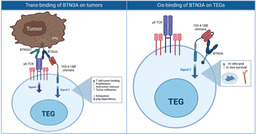How iron sulfide in ancient terrestrial hot springs could have sparked life's first building blocks
Published in Earth & Environment

Research on how non-living carbon fixation could happen in early Earth’s chemistry has often focused on deep-sea hydrothermal vents. These underwater hot spots are thought to be possible places where life could have started, with iron sulfide (FeS) minerals helping to trigger early chemical reactions. Like these deep-sea vents, hot springs on land also contain dissolved ions such as iron, sulfide, and silica, which may play a similar role. However, the role of FeS in supporting carbon fixation in hot springs is still not well understood. In this study, we set out to investigate FeS-catalyzed carbon fixation in conditions that simulate ancient hot springs on land, which could have supported life’s earliest chemical processes on the Earth’s surface.
The Spark of the Idea
My interest in the origins of life started with a scholarship that brought me to Utrecht University at the end of my PhD. Here, I participated in research involving reactions catalyzed by iron sulfides, often compared to iron-sulfur clusters found in ancient enzymes like acetyl-CoA synthase. This link between FeS and life’s emergence remains a point of curiosity to me throughout my postdoctoral years.
At the Astrobiology Graduate Conference 2021, a chance meeting with Quoc Phuong (Jeremy) Tran, a PhD candidate at the University of New South Wales studying prebiotic chemistry, kickstarted this collaboration. Both inspired by the literature on deep-sea hydrothermal vents and terrestrial hot springs, we wanted to bridge the gap between the schools of thought. Our discussion on serpentinization and CO2 reduction in land environments became the concept for this paper. My experience with FeS, along with my PhD research on serpentinization and abiotic synthesis, helped shape our research plan moving forward. Realizing that we needed an expert on photothermal catalysis, I invited my college friend, Shunqin Luo, a postdoc at the National Institute for Materials Science (NIMS) in Japan. Together, our diverse backgrounds and interests began to shape a unique research collaboration focused on exploring the catalytic potential of FeS in terrestrial hot spring environments.
Our main questions were: could FeS support carbon fixation in hot springs like deep-sea vents? What if we could uncover some of the mechanisms that sparked life by simulating these ancient environments?
Simulation Experiments
After I talked to Shunqin, he was immediately enthusiastic about joining the research. Working from their lab at NIMS, he designed experiments to replicate the conditions of ancient hot springs, focusing on FeS as a potential catalyst for early carbon fixation. Using a customized reactor, he introduced CO2 and H2 gases under controlled, anoxic conditions that mimicked the vapor zone of hot springs on the early Earth.
Initially, we used commercially available FeS, but it was heavily contaminated with organic compounds, complicating our results. Determined to maintain experimental purity, we undertook the painstaking task of synthesizing pure and metal-doped FeS with the help of Kensuke Igarashi, achieving the contamination-free material we needed.
Breakthrough Moments
The setup simulated sunlight with UV-visible and UV-enhanced light to assess its impact on FeS’s catalytic effects. To our excitement, FeS—especially when doped with manganese—produced significant methanol yields under UV-visible light, supporting our hypothesis that FeS could catalyze prebiotic carbon fixation. This outcome highlighted a feasible pathway by which terrestrial hot springs could drive life-essential reactions, marking an exciting leap in our understanding of life’s possible origins. What began as a cross-disciplinary collaboration had grown into a study revealing how simple minerals, light, and early Earth conditions could converge to create the building blocks of life. As Shunqin refined his work, we sensed this was just the beginning of our exploration.
A Journey Through Collaboration
After obtaining our preliminary results, Shunqin and I eagerly shared them with Jeremy, who, in turn, consulted his supervisor, Dr. Albert C. Fahrenbach. Their combined expertise in prebiotic chemistry and origins-of-life research gave us new perspectives and insights. Following several online meetings, we decided to conduct supplementary analyses on our FeS samples and designed experiments involving H2O to simulate more realistic ancient hot spring conditions. To further explore these findings, we turned to theoretical analyses with input from Dr. Yingjie Hu, combining quantum mechanical calculations with our experimental data. We discovered evidence of a reverse water-gas shift reaction where CO served as an intermediate. The results were exciting: they suggested that FeS, under these simulated early Earth conditions, could facilitate reactions once thought to require highly specialized enzymes. This catalytic pathway, involving CO as a transient intermediate, hinted at a plausible natural process for carbon fixation in ancient hot springs. It allowed us to imagine how, billions of years ago, similar chemical processes could have supported the buildup of organic molecules critical to life!
This project was a learning journey for all of us. Each team member’s perspective enriched our understanding, and together, we pushed the boundaries of what we thought was possible. We felt fortunate to be part of a collaborative, cross-disciplinary effort, merging each other’s strengths and insights to bring this project to life.
Looking to the Stars
As we look ahead, we also see applications in astrobiology and the search for life on other planets. Early Earth’s conditions may not have been unique—similar environments might exist on other rocky planets. These findings could help us understand how life might arise elsewhere in the universe, just as it may have here on Earth.
Follow the Topic
-
Nature Communications

An open access, multidisciplinary journal dedicated to publishing high-quality research in all areas of the biological, health, physical, chemical and Earth sciences.
Related Collections
With Collections, you can get published faster and increase your visibility.
Women's Health
Publishing Model: Hybrid
Deadline: Ongoing
Advances in neurodegenerative diseases
Publishing Model: Hybrid
Deadline: Dec 24, 2025





Please sign in or register for FREE
If you are a registered user on Research Communities by Springer Nature, please sign in